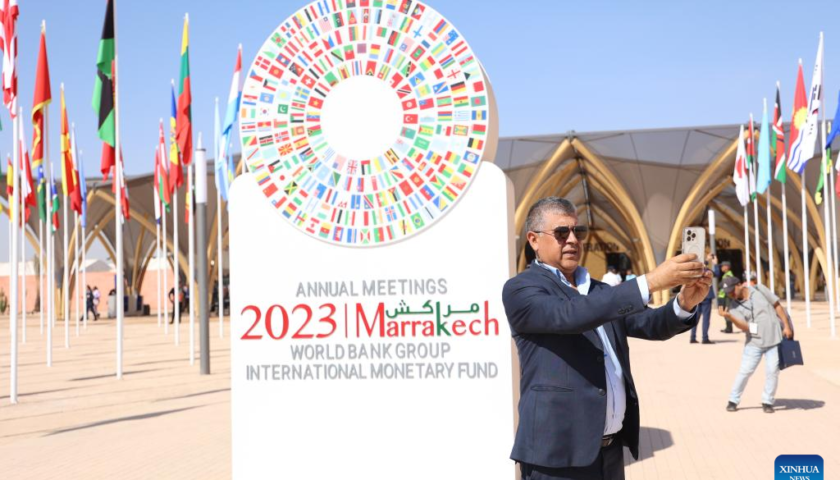By NewsBits
International Monetary Fund (IMF) in its new global economic growth forecast has said that Nigeria economy is projected to grow from 2.9 per cent in 2023 to 3.1 per cent in 2024.
It also said that Sub-Sahara Africa’s economy will grow from 3.3 per cent in 2023 to 4 per cent in 2024. Sub-Saharan Africa’s economic growth will shrink for a second year in a row in 2023 before rebounding in 2024, the International Monetary Fund (IMF) said on Tuesday in a report in which it cut its forecasts for economic expansion. Growth in the region is expected to fall to 3.3 per cent this year from 4 per cent last year, before rebounding to 4 per cent in 2024, the IMF said in its World Economic Outlook report.
That is slightly lower than the IMF predicted in July, when it said Sub-Saharan Africa would grow 3.5 per cent in 2023 and 4.1 per cent next year. Russia’s invasion of Ukraine, after COVID-19 had already dealt the global economy a heavy blow, sent food, fuel and fertiliser prices soaring in Africa last year. Weakening currencies, higher debt service costs and restricted access to capital markets added to debt pressures. The 2023 growth forecast for oil producer Angola was slashed from an April projection of 3.5 per cent to 1.3 pert cent, while Nigeria’s was trimmed from 3.2 per cent to 2.9 per cent. South Africa, whose economy is hobbled by record power cuts, will grow just 0.9 per cent this year.

According to the IMF Kenya’s growth will accelerate 5 per cent this year, the IMF said, up from 4.8 per cent in 2022, despite its government cutting budgets amid soaring debt costs. Tanzania and Senegal are also set to see higher growth this year. Annual inflation across the region, which has seen violent protests against the cost of living in countries including Ghana and Kenya, is expected to be 16.2% at the end of this year. That would be the same as 12 months earlier, the IMF said, before it falls to 10.5% at the end of next year. The global economy continues to recover from the pandemic, Russia’s invasion of Ukraine and the cost-of-living crisis. In retrospect, the resilience has been remarkable. Despite war-disrupted energy and food markets and unprecedented monetary tightening to combat decades-high inflation, economic activity has slowed but not stalled.
It said “Even so, growth remains slow and uneven, with widening divergences. The global economy is limping along, not sprinting. According to our latest projections, world economic growth will slow from 3.5 percent in 2022 to 3 percent this year and 2.9 percent next year, a 0.1 percentage point downgrade for 2024 from July. This remains well below the historical average. Headline inflation continues to decelerate, from 9.2 percent in 2022 on a year-over-year basis, to 5.9 percent this year and 4.8 percent in 2024. Core inflation, which excludes food and energy prices, is also projected to decline, albeit more gradually, to 4.5 percent next year.
Most countries aren’t likely to return inflation to target until 2025. As a result, projections are increasingly consistent with a soft-landing scenario, bringing inflation down without a major downturn in activity, especially in the United States, where our forecast increase in unemployment is now modest, from 3.6 percent to 3.9 percent by 2025.





